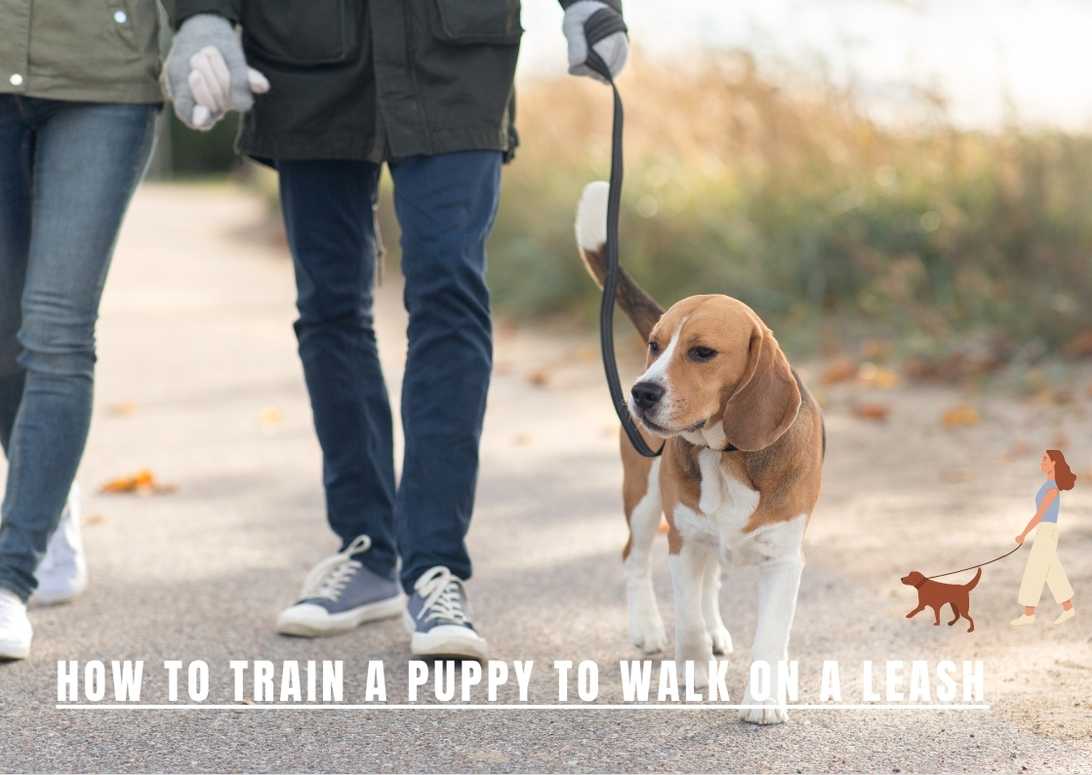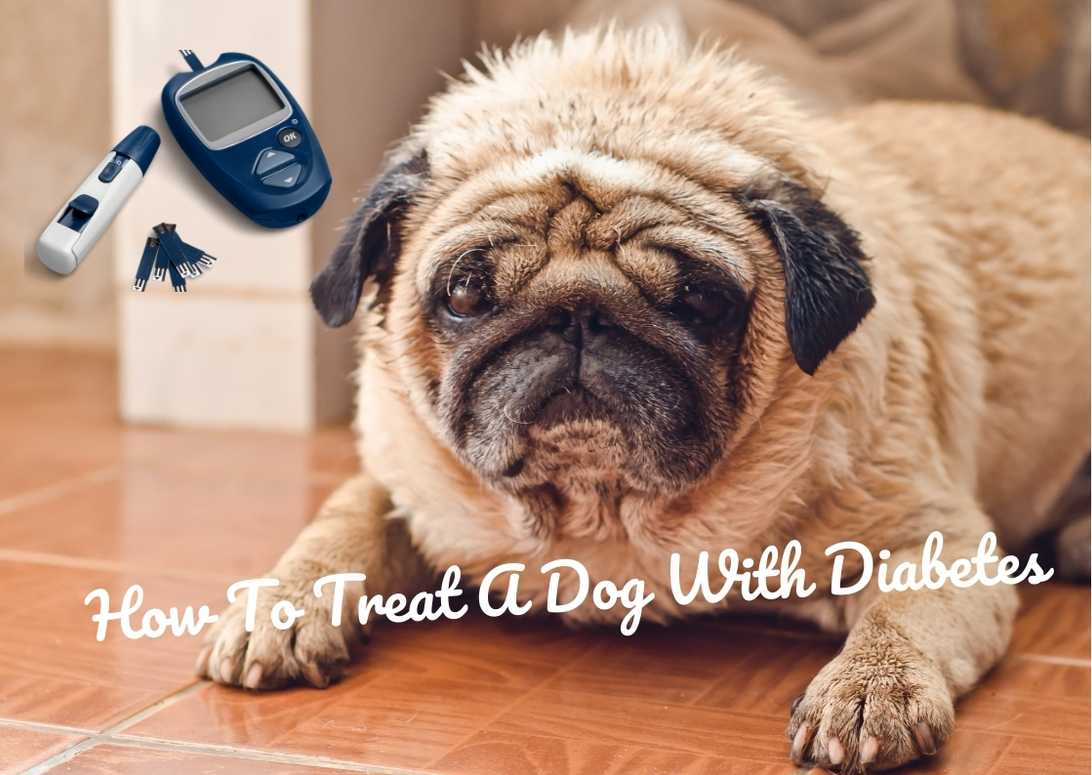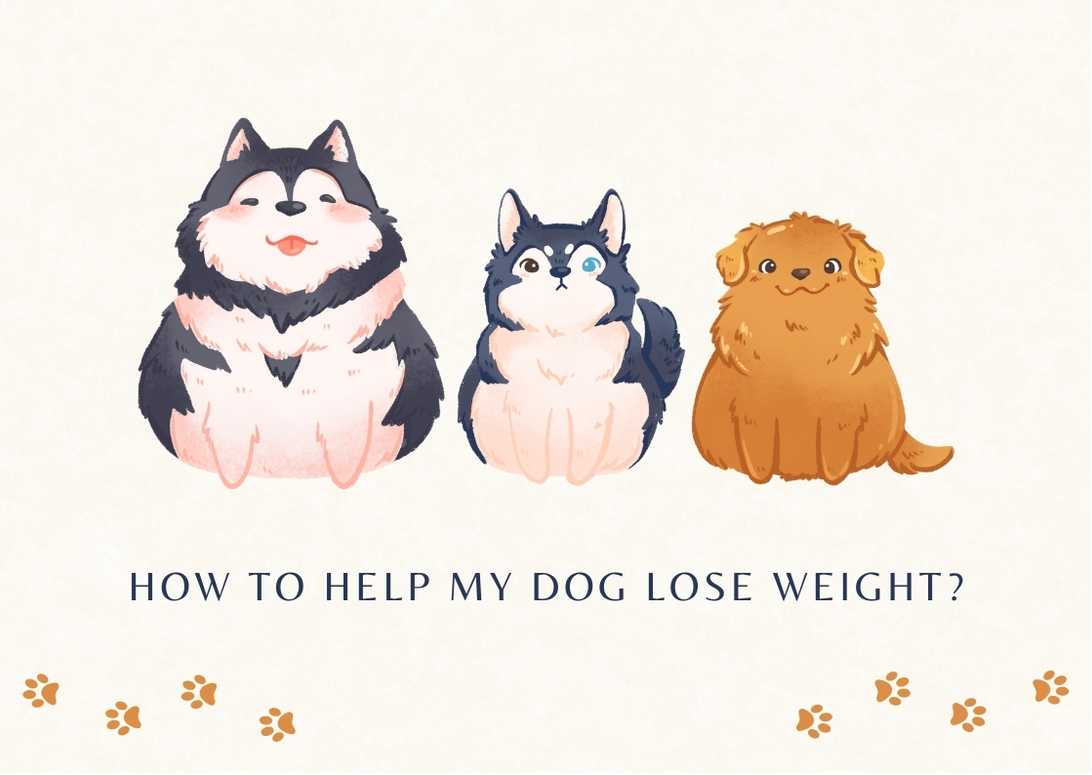How To Train A Puppy To Walk On A Leash
Training a puppy to walk on a leash is an important skill that every dog owner should master. Not only does it provide exercise and mental stimulation for your furry friend, but it also ensures their safety when out and about. In this article, I will guide you through the step-by-step process of training your puppy to walk on a leash, from introducing the equipment to teaching basic cues and dealing with common challenges.
Firstly, it’s crucial to introduce your puppy to the necessary equipment – a collar or harness and leash. Start by allowing them to sniff and explore these items in a comfortable environment. Once they are familiar with the equipment, attach the leash and let them drag it around for short periods of time inside the house. This helps them get used to the feeling of being connected to you without any pressure.
Next, we will focus on teaching basic cues such as ‘sit’ and ‘stay.’ These commands lay the foundation for walking on a leash as they teach your puppy impulse control. Practice these cues indoors in a distraction-free area before gradually progressing to more challenging environments. Remember to use positive reinforcement techniques like treats or praise when your pup successfully follows a cue.
With patience and consistency, you’ll soon have a well-behaved puppy who walks calmly by your side on their leash!
Important Points
- Introduce equipment and let the puppy explore it to familiarize them with the collar or harness and leash.
- Use positive reinforcement techniques like treats or praise to reinforce good behavior and encourage the puppy to walk on the leash.
- Gradually increase difficulty and introduce distractions during walks to improve the puppy’s impulse control and focus.
- Consistency and patience are key in leash training, and it is important to reinforce good behavior and gradually increase the duration and distance of walks.
How to Introduce the Equipment
Now that you’ve taught your puppy a cue and how to come to you, it’s time to introduce the equipment they’ll need for leash training.
The first step is choosing the right collar or harness. It’s important to find one that fits properly and is comfortable for your puppy. Make sure it doesn’t restrict their movement or cause any discomfort.
Once you have the appropriate collar or harness, gradually introduce the leash by attaching it while your puppy is wearing their collar or harness indoors. Allow them to get used to the feeling of having something attached to them before moving on to outdoor training.
During this gradual introduction, use positive reinforcement such as treats or praise to create a positive association with the leash. Reward your puppy for calm behavior and allow them time to explore without pulling on the leash. This will help them understand that good things happen when they are wearing the leash.
After successful introduction indoors, start practicing walking on a leash in a controlled environment such as your backyard or a quiet park. Begin by taking short walks and gradually increase the distance as your puppy becomes more comfortable. Remember to always use positive reinforcement and reward good behavior.
As you progress with leash training, it’s important to introduce distractions gradually. Start in a low-distraction environment and then gradually expose your puppy to different sights, sounds, and smells during walks. This will help them learn how to stay focused on you even in more challenging situations.
With a successful introduction of equipment completed, it’s time to move on to teaching basic cues such as sit, stay, and heel. These cues will be essential for maintaining control during walks and ensuring a safe experience for both you and your pup.
Teaching Basic Cues
Begin by teaching your furry friend some basic commands that will make them feel more confident and connected to you. One of the most important cues to teach is ‘sit.’
Start by holding a treat close to your puppy’s nose and slowly move it up, causing their head to follow the treat and their bottom to lower down naturally into a sitting position. Once they are in a sit, say ‘sit’ and give them the treat as a reward. Repeat this process several times until your puppy understands the cue and consistently sits when you say it.
Another essential command is ‘stay.’ Begin by having your pup sit in front of you. Hold your hand out, palm facing towards them, and say ‘stay’ while taking a small step back. If they remain in their sitting position without moving towards you, reward them with praise or treats. Gradually increase the distance and duration of the stay over time as your puppy becomes more comfortable with the command.
By teaching these basic cues, such as sit and stay, you are setting the foundation for teaching loose leash walking later on. Reinforce good behavior during training sessions by using treats as rewards for following commands correctly. Remember to keep training sessions short and positive to maintain your puppy’s interest.
To build trust and bond with your puppy during training, avoid distractions that could disrupt their focus. Find a quiet area where you can work together without too many external stimuli. This will help ensure that they understand what is expected of them without getting overwhelmed.
Now that your pup has learned some basic cues, it’s time to practice indoors…
Practicing Indoors
Once your furry friend has mastered some basic commands, it’s time to have fun practicing indoors and strengthening our bond. Indoor leash training provides several benefits such as a controlled environment where distractions can be minimized, allowing us to focus on the training. Additionally, it gives us the opportunity to reinforce positive behaviors and build confidence in our puppy.
However, there may be some common challenges when practicing indoors. Limited space can make it difficult for the puppy to fully explore and move around freely. It’s important to ensure that the indoor area is safe and free from any hazards that could potentially harm our pup. Another challenge might be getting our puppy accustomed to walking calmly on a leash without pulling or becoming overly excited.
To overcome these challenges, here are some indoor leash training exercises for puppies:
Start by introducing your puppy to the collar or harness and leash indoors, allowing them to sniff and become familiar with these items.
Practice loose-leash walking by using treats or toys as rewards for walking beside you without pulling.
Set up obstacle courses using furniture or other objects in your home to practice navigating around obstacles while maintaining a loose leash.
To create a positive indoor training environment, make sure you have plenty of treats or rewards readily available during training sessions. Use positive reinforcement techniques such as praise and treats when your puppy exhibits desired behaviors like walking calmly on the leash. Also, keep training sessions short and frequent to maintain their interest and prevent boredom.
Incorporating indoor leash training into your puppy’s daily routine will help them develop good leash manners before transitioning outdoors. Consistency is key; try incorporating short walks inside your home every day, gradually increasing the duration over time until your puppy becomes comfortable with longer walks. With consistent practice and patience, we can successfully transition our furry friend from practicing indoors to confidently walking on a leash outdoors without any issues.
Now let’s discuss how we can smoothly transition from practicing indoors to taking our puppy for walks outdoors.
Transitioning to Outdoors
To smoothly transition to outdoor adventures, how can we help our furry friend explore the world beyond their indoor training sessions? One important aspect is choosing the right leash length. For a puppy, it’s best to start with a shorter leash to ensure they stay close and focused during walks. As they become more comfortable and confident, gradually increase the length of the leash to give them more freedom to explore.
During outdoor walks, distractions can be a challenge for puppies. It’s important to be patient and consistent in teaching them how to deal with these distractions. Use positive reinforcement techniques such as treats or praise when your puppy stays focused on you despite distractions like other dogs or squirrels. Additionally, teaching the ‘heel’ command can be helpful in maintaining control during walks. This command encourages your puppy to walk calmly by your side instead of pulling or wandering off.
Using positive reinforcement is key when encouraging loose leash walking outdoors. Whenever your puppy walks beside you without pulling, reward them with treats or verbal praise. This will reinforce their good behavior and motivate them to continue walking nicely on the leash. Gradually increase the duration and distance of outdoor walks as your puppy becomes more comfortable and responsive to leash training.
Now that we’ve covered transitioning outdoors and dealing with distractions, let’s move on to addressing another common issue: dealing with pulling during walks without causing harm or discomfort for our furry companions.
Dealing with Pulling
Easily overcome the challenge of your energetic companion pulling during walks by implementing effective techniques. Teaching loose leash walking can be achieved through the use of treats as rewards and positive reinforcement.
Whenever your puppy walks calmly beside you without pulling, reward them with a treat and praise. This will help them associate walking on a loose leash with positive experiences. Clicker training can also be an effective tool in teaching your puppy to walk on a leash. By using a clicker to mark the desired behavior of walking without pulling, you can reinforce this behavior consistently.
In addition to treats and positive reinforcement, using a front clip harness can also aid in reducing pulling during walks. A front clip harness attaches the leash at the chest area instead of the back, which gives you more control over your puppy’s movements. When they start to pull, the harness redirects their momentum towards you rather than allowing them to continue pulling forward. This helps discourage pulling and encourages them to walk beside you.
By incorporating these techniques such as using treats as rewards, positive reinforcement, clicker training, and utilizing a front clip harness, you’ll find that teaching your puppy to walk on a leash becomes much easier and enjoyable for both of you. Transitioning into the next section about teaching attention can further enhance your walking experience with your furry friend without feeling overwhelmed by their constant pulling.
Teaching Attention
By incorporating these techniques, you’ll quickly notice your furry friend’s increased focus and attentiveness during walks.
Consistency in training is key when teaching attention to your puppy. Make sure to use the same cues and rewards consistently so that your puppy can understand what’s expected of them. This will help them develop a habit of paying attention to you during walks.
Using treats as positive reinforcement is an effective way to encourage your puppy to pay attention. Whenever they look at you or respond to their name, reward them with a treat. This will create a positive association between giving attention and receiving a reward.
Incorporating playtime into leash training can also improve your puppy’s focus and attention on walks. Before heading out for a walk, spend some time playing with your puppy. This will help release any excess energy and make them more attentive during the walk.
Teaching the ‘leave it’ command during walks can be helpful in redirecting your puppy’s attention from distractions such as squirrels or other dogs. Start by holding a treat in your closed hand and say ‘leave it.’ When they stop trying to get the treat, reward them with another treat from your other hand.
Introducing distractions gradually during training sessions can also improve focus and attention on walks. Start by practicing in a quiet environment, then gradually add more distractions such as people walking by or noises in the background. This will help teach your puppy how to stay focused on you even when there are distractions present.
With these techniques, you’ll be well on your way to having a puppy who pays close attention during walks. Now let’s move on to practicing recall, which is an essential skill for off-leash outings with our furry friends.
Practicing Recall
Mastering the art of recall is like having a magnet in my pocket, effortlessly pulling my canine companion back to my side with a single word. Consistency is key when it comes to recall training. I make sure to use positive reinforcement every time my puppy comes to me when called.
Whether it’s through treats, praise, or playtime, I want my pup to associate coming back to me with something rewarding and enjoyable. This helps reinforce the behavior and encourages them to repeat it in the future.
When facing common recall challenges, such as distractions or lack of motivation, I find that patience and persistence are important. It’s important not to punish or scold my puppy if they don’t come immediately when called but instead focus on creating a positive association with coming back.
Gradually increasing distance and difficulty in recall exercises can also help strengthen their response. By starting in a low-distraction environment and gradually incorporating more distractions, I can ensure that my puppy is able to listen and respond even in challenging situations.
Overall, practicing recall consistently with positive reinforcement and gradually increasing difficulty will help me train my puppy to reliably come back when called. With time and effort, I know that our bond will grow stronger as we navigate through various environments together.
Frequently Asked Questions
How do I choose the right collar or harness for my puppy?
When choosing a collar or harness for your puppy, consider different types of collars available such as flat collars, martingale collars, and harnesses. Measure your puppy’s neck or chest to ensure the right fit. Collars are great for leash training but can put pressure on the neck, while harnesses distribute the force more evenly. Introduce your puppy gradually to wearing a collar or harness by using positive reinforcement techniques and making it a pleasant experience.
What age should I start leash training my puppy?
It’s important to start leash training my puppy at around 8-10 weeks old. During this critical socialization period, I can introduce the collar or harness and leash, use positive reinforcement techniques, avoid common mistakes, and handle leash pulling by using positive reinforcement methods.
How long should I practice leash training with my puppy each day?
Leash training my puppy is crucial, so I practice every day to build their confidence and consistency. I use leash training techniques, positive reinforcement, and tackle common challenges. It’s all about creating a strong bond and making walks enjoyable for both of us!
What do I do if my puppy refuses to walk on a leash?
If my puppy refuses to walk on a leash, I would try alternative methods such as using a harness instead of a collar. Understanding their fear and slowly introducing the leash can help overcome obstacles. Seeking professional help is also an option to build trust and confidence in leash training.
Can I use treats as a reward during leash training?
Yes, you can use treats as a reward during leash training. Positive reinforcement methods, like using treats, can be effective in teaching a puppy to walk on a leash. However, it’s important to also incorporate play and alternative rewards to avoid over-reliance on treats.
Conclusion
In conclusion, training a puppy to walk on a leash is no easy task, but with patience and consistency, it can be accomplished. By properly introducing the equipment – collar or harness and leash – you’re setting your puppy up for success.
Teaching basic cues like ‘heel’ or ‘let’s go’ will help establish communication between you and your furry friend.
Indoor practice sessions are crucial for building confidence and familiarity before venturing outside. Gradually transitioning to outdoor walks allows your puppy to explore new environments while still feeling secure. Dealing with pulling can be challenging, but by turning yourself into a ‘tree’ when your pup pulls, you teach them that pulling won’t get them anywhere.
To keep their attention focused on you during walks, teaching markers like clicks or verbal cues can provide positive reinforcement. Creating positive associations with the leash by incorporating treats or praise will make walking an enjoyable experience for both of you.
Just like any learning process, training a puppy to walk on a leash takes time and effort. But remember, Rome wasn’t built in a day! With consistent practice and gentle guidance, soon enough your puppy will be walking beside you like a well-trained trooper – as smooth as butter melting in the summer sun!
So take those first steps today and enjoy many wonderful walks together in the future!







